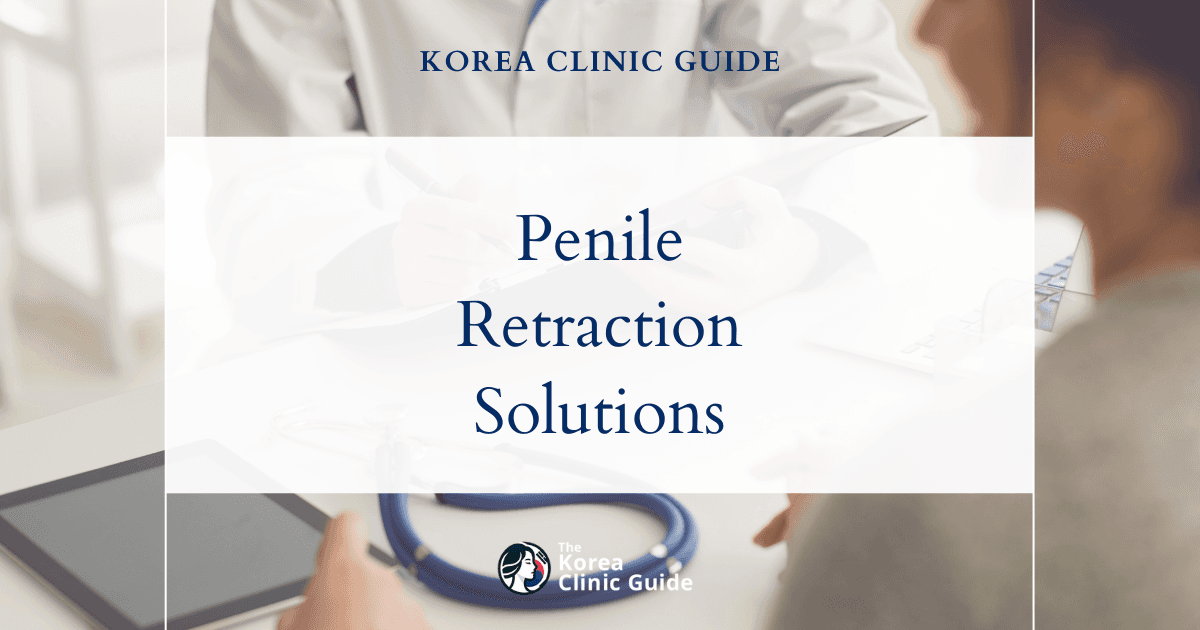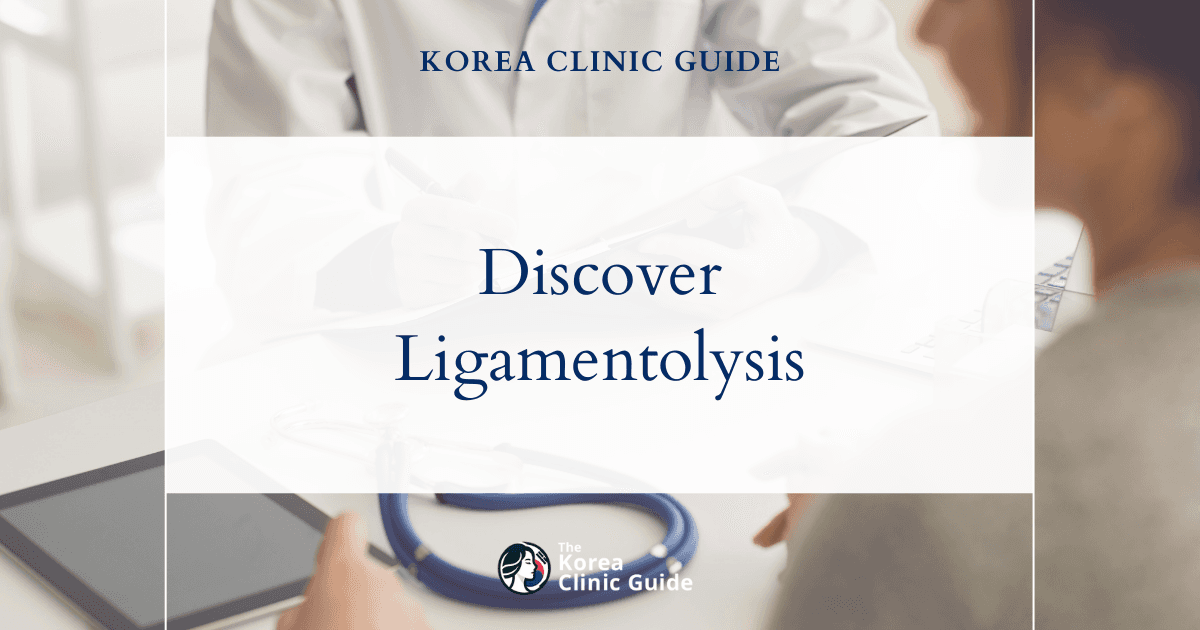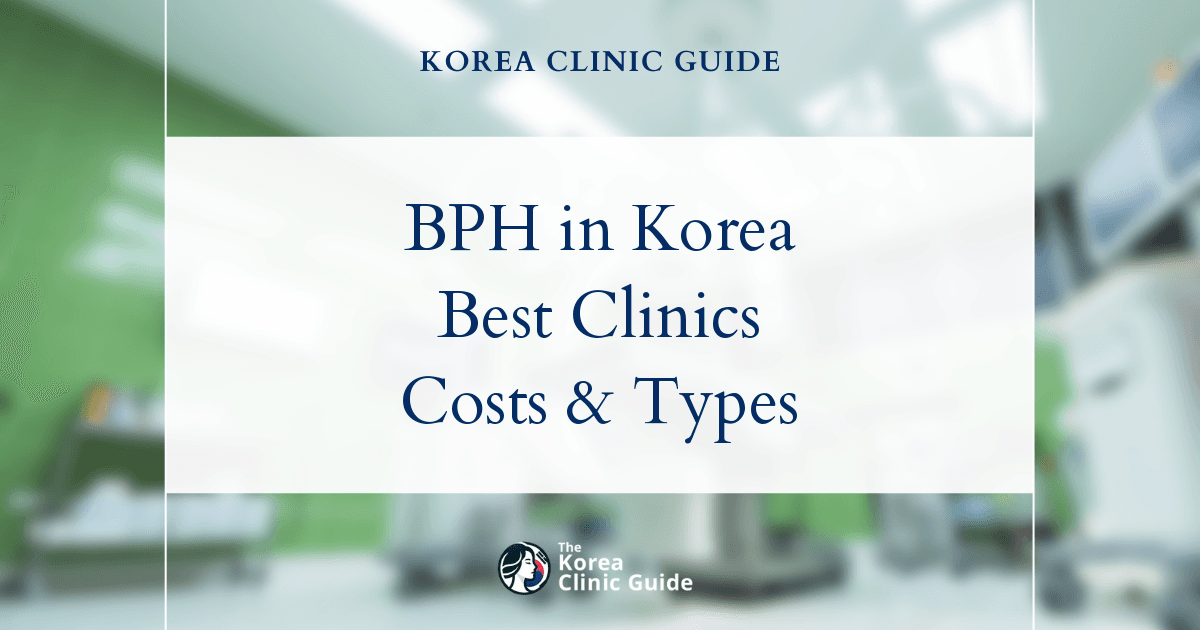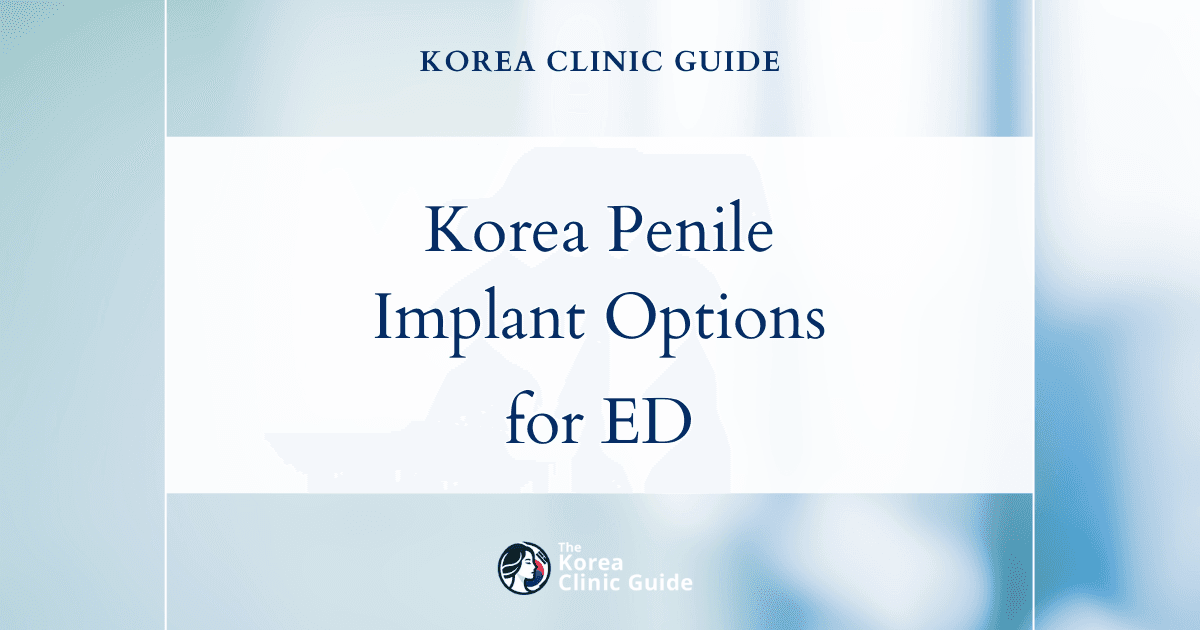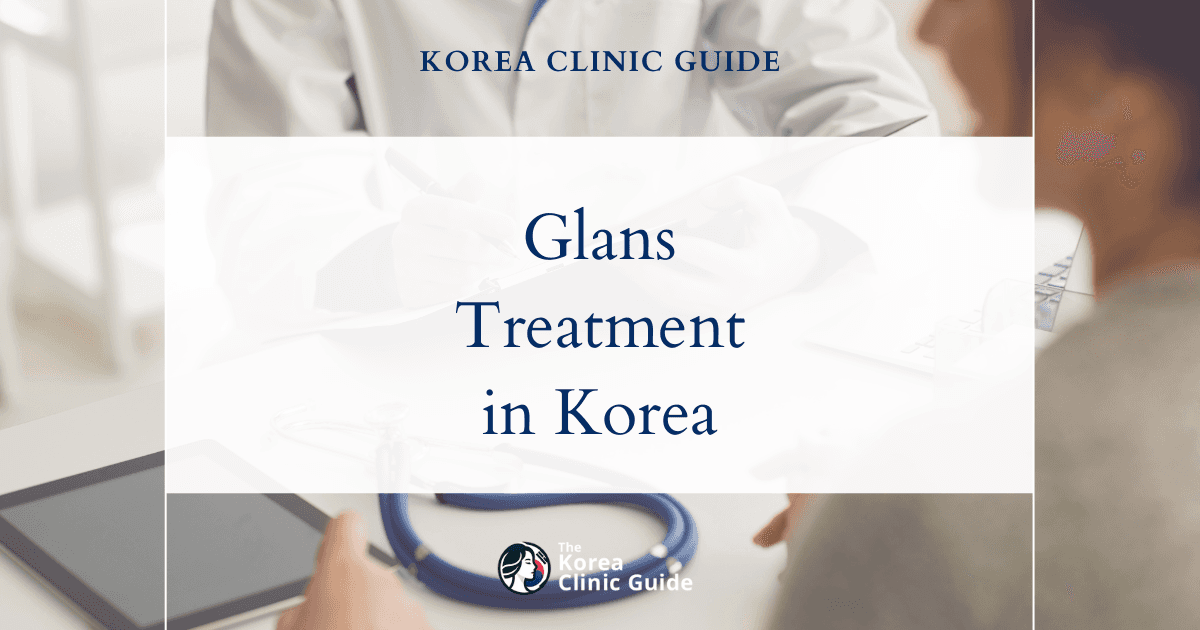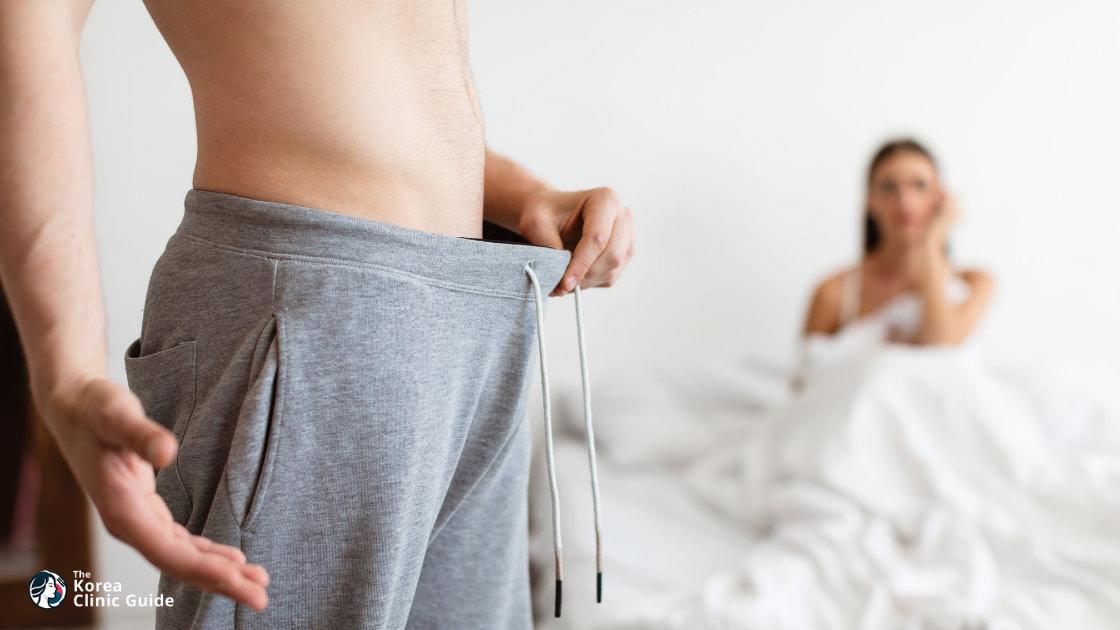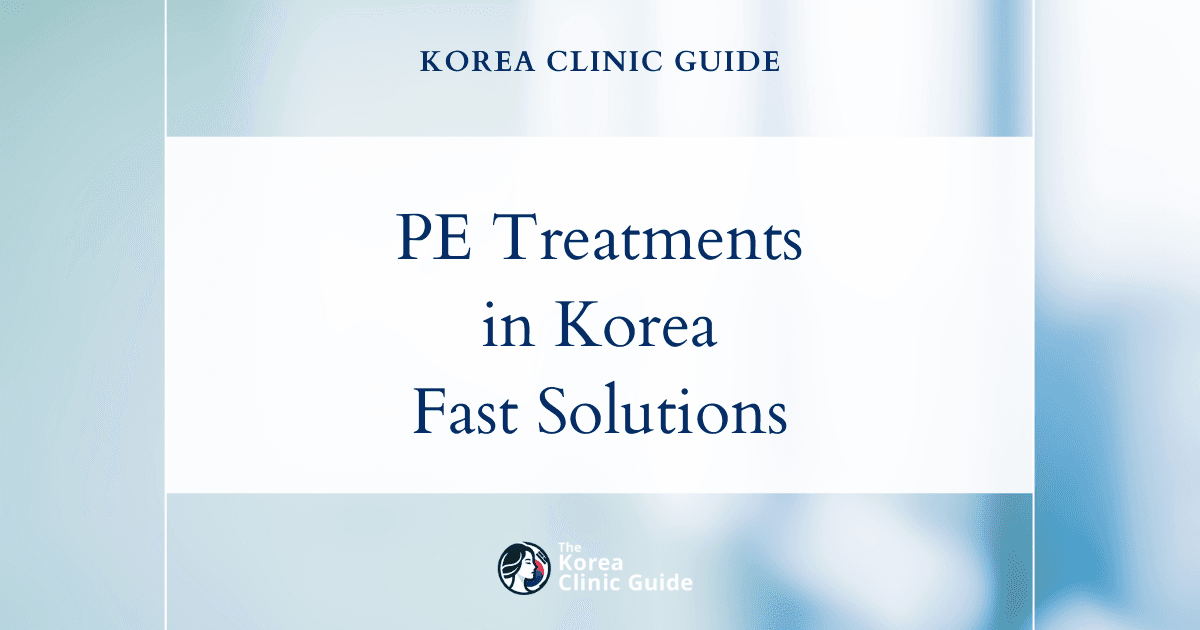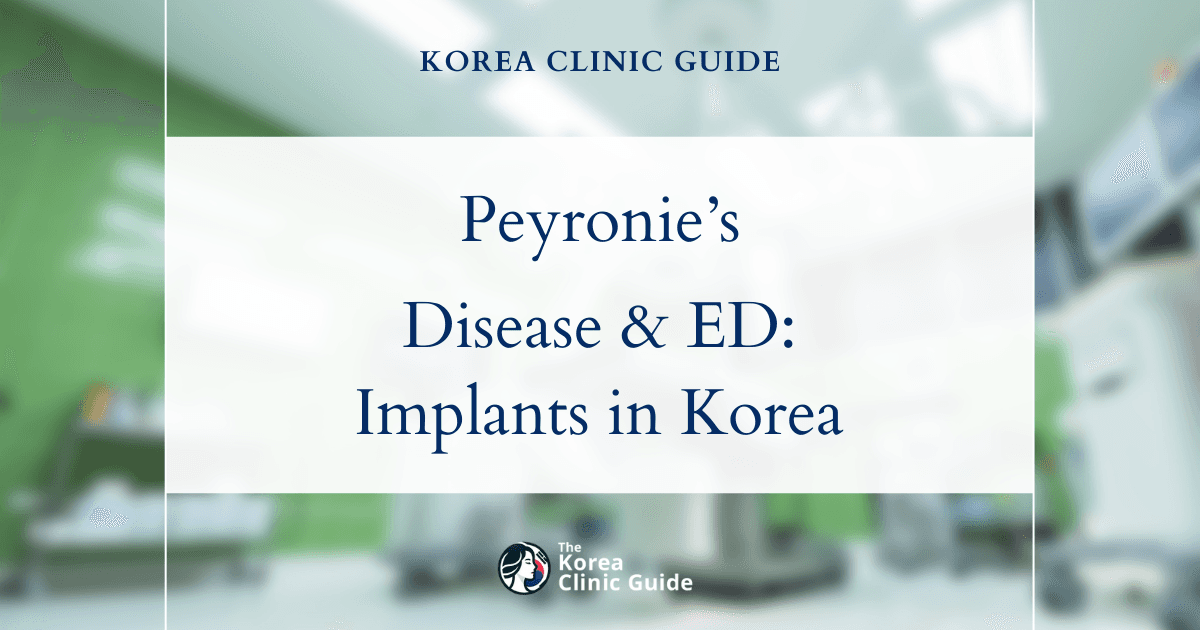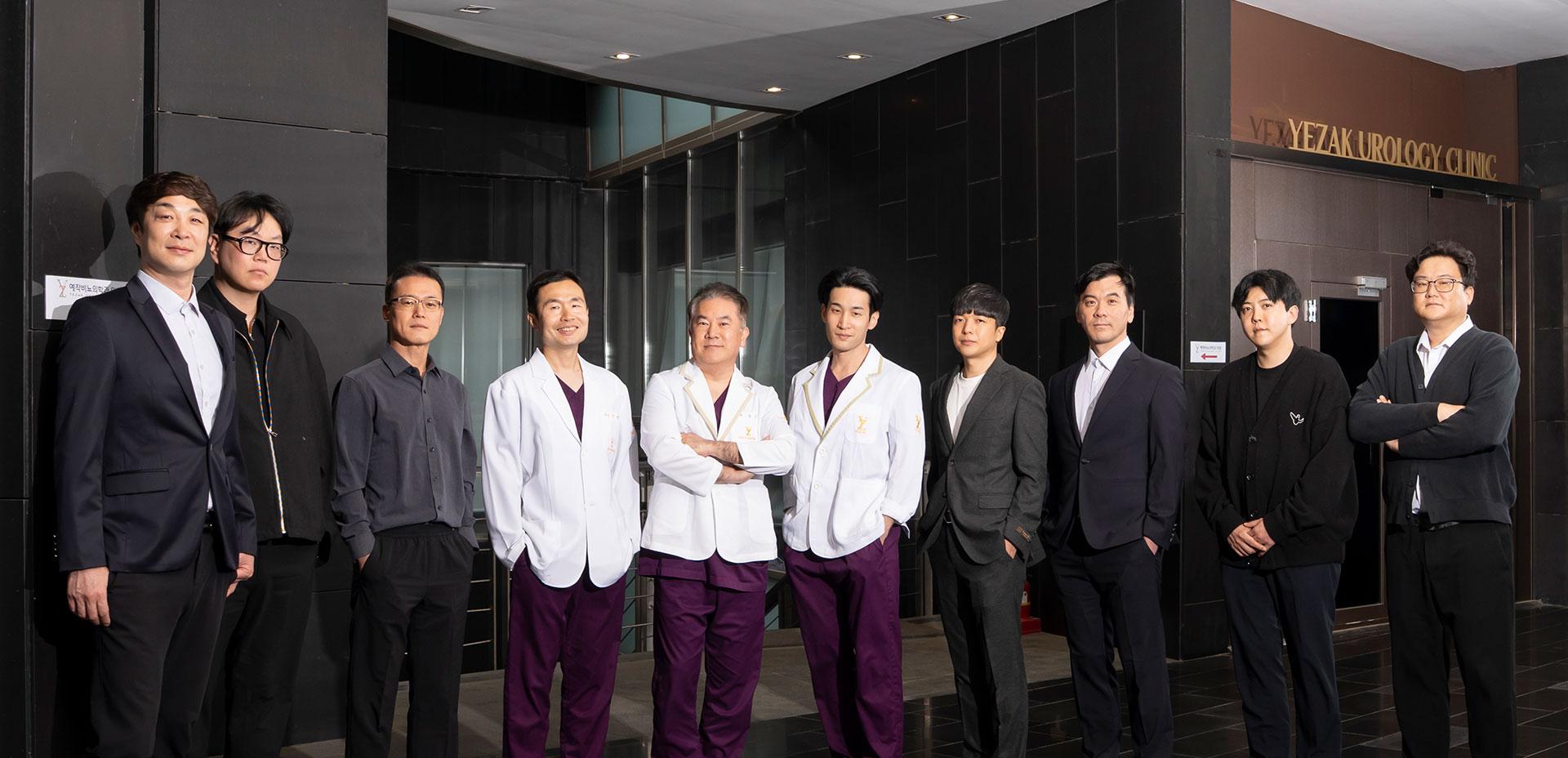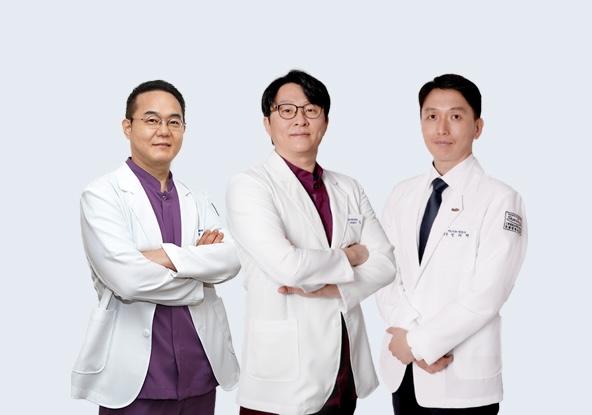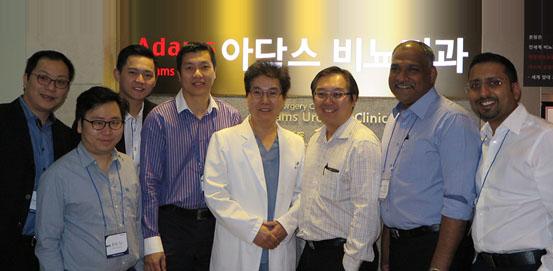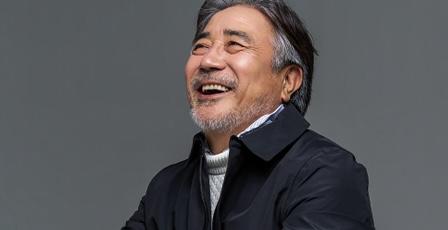Medical Tourism Blog
Penile Implant in Korea | Best Clinics, Costs, Procedure Types & More
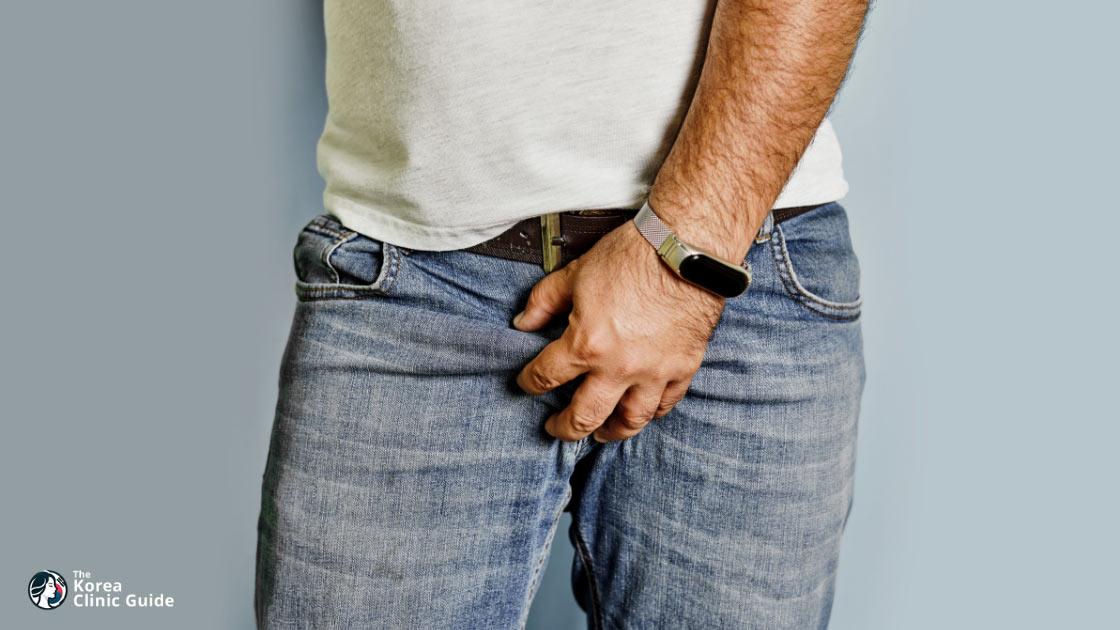
Table of contents
- What Is Penile Implant?
- Best Clinics in Korea for Penile Implant
- Penile Implant in Korea
- Cost of Penile Implant in Korea
- Alternatives to Penile Implant
- Conclusion
Considering treatment in Korea? Everything you need to know e.g. — how to avoid scams, visas, interpreters, recovery tips — in our Medical Tourism Master Guide. Plan with confidence in minutes, not weeks!
Have you ever wondered why South Korea has become a leading destination for advanced penile implant procedures? As the country emerges as a global hub for cutting-edge solutions to erectile dysfunction, this article delves into the intricacies of penile implants, showcases top clinics in Korea, and highlights why this destination is increasingly favored by medical tourists.
What Is Penile Implant?
A penile implant is a medical device surgically placed into the penis to enable men with erectile dysfunction (ED) to achieve an erection. This procedure is often considered when other less invasive treatments, such as oral medications, injections, or vacuum devices, have failed to provide satisfactory results.
Who Is It For?
Penile implants are typically recommended for men who:
- Have severe erectile dysfunction that has not responded to other treatments.
- Suffer from Peyronie's Disease, which can sometimes cause severe deformity or penile curvature.
- Have experienced erectile dysfunction following procedures, such as prostatectomy or other pelvic surgeries.
- Desire a long-term solution to ED for improved sexual experience and quality of life.
Types of Penile Implants
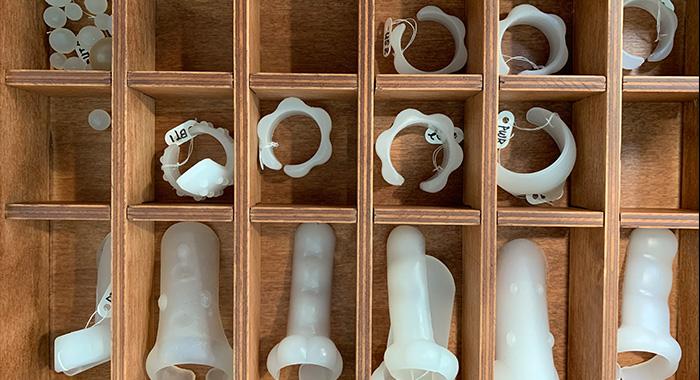
There are mainly two types of penile implants: inflatable implants and semi-rigid (or malleable) implants. Each type has its characteristics, advantages, and potential drawbacks.
Inflatable Implants
Three-Piece Inflatable Implants: This type involves three interconnected components: two inflatable cylinders, a pump, and a fluid reservoir. The cylinders are placed inside the penis, the pump is implanted in the scrotum, and the reservoir is situated in the lower abdomen. When an erection is desired, the man presses the pump in the scrotum, transferring fluid from the reservoir into the cylinders, creating an erection. After sexual activity, releasing the pump returns the fluid to the reservoir, deflating the penis.
Advantages:
- Produces the most natural-looking erection.
- Allows for flaccidity when not in use, making it more comfortable and natural-feeling.
Potential Drawbacks:
- More complex surgery.
- Higher possibility of mechanical failure.
Two-Piece Inflatable Implants: This type consists of two components: the cylinders and the pump. The fluid is contained within the pump, which is placed inside the scrotum alongside the cylinders in the penis. Functionally similar to the three-piece but generally recommended when patients may not be candidates for the three-piece due to anatomical or medical considerations.
Advantages:
- Slightly less complex than the three-piece device.
- Fewer components hence slightly reduced risk of mechanical failure.
Potential Drawbacks:
- May not provide as firm an erection as the three-piece implants.
- Can be bulkier in the scrotum due to combined pump and fluid reservoir.
Semi-Rigid (Malleable) Implants
The semi-rigid, or malleable, implants consist of rods that are placed into the penis. These rods can be adjusted manually for a more natural erection-like status. They are always firm yet bendable, allowing positioning up or down according to preference.
Advantages:
- Simpler surgical procedure and maintenance.
- No risks of mechanical failure.
Potential Drawbacks:
- The penis is always semi-rigid, which can make it less natural and potentially less comfortable.
Surgical Procedure
The surgical placement of a penile implant typically requires general or spinal anesthetics and is usually performed in a hospital or surgical center. The surgical process involves:
- Making an incision in the lower abdomen, in the base of the penis, or in the scrotum.
- Placing the chosen implant type inside the penis according to specific placement protocols.
- Ensuring proper placement with checks for fit and alignment.
- Closing the incision with sutures.
Recovery usually involves taking prescribed antibiotics to prevent infection and managing swelling and pain with medications. Most men can resume sexual activities approximately 4-6 weeks post-operation.
Risks and Considerations
Like any surgical procedure, penile implants carry potential risks, including infection, device malfunction, and bleeding. Prospective patients should discuss with their healthcare providers to weigh the risks and benefits, explore their medical history, and evaluate the most suitable type of implant for their needs. Regular follow-ups are essential to ensure the proper functioning of the implant and manage any complications.
Penile implants offer a reliable and long-term solution for men suffering from severe erectile dysfunction, enhancing the quality of life and allowing for sexual satisfaction when other treatments have failed.
Best Clinics in Korea for Penile Implant
Listed below are the best clinics in Korea for penile implant:
| Clinic Name | Key Features | Special Techniques |
|---|---|---|
| Yezak Urology Website | Dedicated men’s health center in Apgujeong offering specialized surgical and non-surgical care by a multi-specialist team with advanced safety systems. | Inflatable penile implants—three-piece hydraulic devices that deliver on-demand rigidity with a natural look when deflated—and malleable implants that provide dependable firmness with straightforward use and discreet positioning; ED management with medications, injections, vacuum devices, and shockwave therapy; evaluation of cardiovascular and hormonal contributors; Peyronie’s disease treatments (collagenase injections, traction, plication, grafting); male enhancement procedures (girth augmentation, suspensory ligament release with postoperative traction protocols, glans augmentation); premature ejaculation care; genital plastic surgery; prostate care for BPH and prostatitis; circumcision; vasectomy; STD diagnosis and treatment; and andropause management; general men’s health checkups. |
| Stantop Urology & Andrology Website | StanTop Urology & Andrology Clinic offers advanced urological and andrological treatments; recognized by KBS with over 100,000 patient consultations and 40,000 surgeries performed; separate consultation and treatment rooms for men and women; VIP personalized care and dedicated facilities; trusted expertise in penile implant surgery and erectile dysfunction care. | Penile implant options: three-piece inflatable implants for natural-feeling erections and malleable semi-rigid implants for reliable function; regenerative and non-invasive ED therapies: stem cell therapy and shockwave therapy; complementary procedures: penile enlargement, glans enhancement, penile lengthening, premature ejaculation treatments; STD check-ups, circumcision, vaseline removal, vasectomy; comprehensive prostate care—from one-day check-ups to management of BPH and prostatitis. |
| Adams Urology Website | Adams Urology in Samsung is a dedicated center for penile implant surgery in Korea, offering advanced technologies and a patient-centered approach to treating erectile dysfunction. | Inflatable penile prosthesis implantation; glans penis augmentation; prostate surgery for benign prostatic hyperplasia or prostate cancer using traditional and minimally invasive methods like laser therapy; thorough consultations and attentive post-operative care to promote comfort, confidence, and effective outcomes. |
Yezak Urology
Yezak Urology in Apgujeong is a dedicated men’s health center providing specialized surgical and non-surgical care by a multi-specialist team supported by advanced safety systems. For erectile dysfunction, the clinic offers both inflatable penile implants—three-piece hydraulic devices that deliver on-demand rigidity with a natural look when deflated—and malleable implants that provide dependable firmness with straightforward use and discreet positioning. Treatment plans are individualized to patient goals and medical needs, with an emphasis on function, comfort, and long-term reliability.
Beyond implants, Yezak provides comprehensive ED management with medications, injections, vacuum devices, and shockwave therapy, alongside evaluation of cardiovascular and hormonal contributors. The team also addresses related conditions and goals that can influence sexual function and outcomes, including Peyronie’s disease (collagenase injections, traction, plication, grafting), male enhancement procedures (girth augmentation, suspensory ligament release with postoperative traction protocols, glans augmentation), premature ejaculation care, and genital plastic surgery. Complementary services span prostate care for BPH and prostatitis, circumcision, vasectomy, STD diagnosis and treatment, and andropause management, supported by general men’s health checkups for truly end-to-end care.
You can check out their website here: Yezak Urology Website
Stantop Urology & Andrology
StanTop Urology & Andrology Clinic in Korea is a specialized medical institution dedicated to improving the quality of life for men and women both domestically and globally through advanced urological and andrological treatments. KBS recognized with over 100,000 patient consultations and 40,000 surgeries performed, the clinic offers trusted expertise in penile implant surgery and erectile dysfunction care. To ensure comfort and privacy, StanTop provides separate consultation and treatment rooms for men and women, along with VIP personalized care and dedicated facilities.
For penile implant candidates, StanTop delivers a comprehensive range of options, including three-piece inflatable implants for natural-feeling erections and malleable semi-rigid implants for reliable function. The clinic also provides regenerative and non-invasive ED therapies such as stem cell therapy and shockwave therapy, and complementary procedures including penile enlargement, glans enhancement, penile lengthening, and treatments for premature ejaculation. Additional services span STD check-ups, circumcision, vaseline removal, vasectomy, and comprehensive prostate care—from one-day check-ups to management of BPH and prostatitis—ensuring individualized, end-to-end care.
You can check out their website here: Stantop Urology & Andrology Website
Adams Urology
Adams Urology in Samsung is a dedicated center for penile implant surgery in Korea, offering advanced technologies and a patient-centered approach to treating erectile dysfunction. The clinic specializes in inflatable penile prosthesis implantation, in which a device is inserted into the penis and can be pumped up for an erection and deflated afterward, providing a discreet, reliable solution tailored to individual needs.
Beyond penile implants, Adams Urology provides comprehensive sexual and prostate health services, including glans penis augmentation and prostate surgery for conditions such as benign prostatic hyperplasia or prostate cancer, using both traditional and minimally invasive methods like laser therapy. The team supports patients with thorough consultations and attentive post-operative care to promote comfort, confidence, and effective outcomes throughout the treatment journey.
Find more about this clinic here: Adams Urology Website
Penile Implant in Korea
Penile implantation is a sought-after solution for men experiencing erectile dysfunction (ED) who have not had success with other treatment methods. This medical procedure provides an effective, long-term solution and is gaining popularity globally, including in South Korea, known for its advanced medical technology and high-quality healthcare services.
Pre-Procedure Consultation
In South Korea, the journey towards a penile implant starts with an initial consultation. Patients often meet with a urologist who specializes in male sexual health. During this appointment, a thorough medical history is reviewed, and a physical examination is conducted to determine the suitability of the procedure for the patient. South Korean clinics are renowned for their meticulous approach, ensuring that all potential risks and benefits are clearly communicated.
The medical practitioner will also discuss the different types of penile implants available, such as inflatable implants and semi-rigid rods, to help patients make an informed decision. The consultation may involve various diagnostic tests like blood tests, urinalysis, and possibly an ultrasound to assess penile and pelvic anatomy.
Procedure Day
On the day of the surgery, patients are typically admitted to a high-standard medical facility, many of which have state-of-the-art technology and appliances. South Korean hospitals are known for their cleanliness, with rigorous protocols to minimize infection risk.
The penile implant surgery is generally done under general anesthesia, though in some cases, a spinal or local anesthesia with sedation might be used. The surgical procedure usually lasts between one to two hours. The surgeon makes an incision at the base of the penis or in the lower abdomen to place the chosen penile implant. Care is taken to ensure minimal scarring and to preserve the natural appearance of the penis.
Post-Operative Care
Post-operative care in Korea is exceptional, with an emphasis on patient comfort and recovery. Patients are typically required to stay in the hospital for one or two days post-surgery to monitor any immediate complications and to manage pain effectively. South Korean medical staff is known for their attentiveness, ensuring that patients receive adequate care and guidance during their stay.
Upon discharge, patients receive detailed instructions on managing their recovery. These instructions often include guidelines on keeping the surgical site clean, activity restrictions to avoid strain, and a schedule for follow-up appointments. Antibiotics and pain relievers are commonly prescribed to prevent infection and manage discomfort.
Follow-Up and Rehabilitation
Follow-up care is a critical part of the penile implant procedure in South Korea. Patients usually have a series of follow-up appointments to ensure proper healing and to monitor the functionality of the implant. The first follow-up is typically scheduled a week or two after the surgery, with subsequent visits spaced out over the next six months.
Rehabilitation includes instructions on how to operate the implant if an inflatable device is used. Patients are educated on activating the pump and deflating the implant for sexual activity and daily use. South Korean healthcare providers often include counseling and support to help patients adjust psychologically and emotionally to their new implant, ensuring a holistic approach to recovery.
Medical Tourism and Language Support
South Korea is a popular destination for medical tourism, thanks to its advanced healthcare systems and skilled practitioners. Many hospitals cater specifically to international patients, offering services in multiple languages. Language support can include translation services during consultations and availability of English-speaking medical staff, ensuring clear communication throughout the treatment process.
Additionally, the cost of penile implants in South Korea is relatively competitive compared to Western countries, making it an attractive option for those seeking quality medical care at an affordable price. Many medical facilities also assist with travel arrangements, accommodation, and post-procedural care, providing a comprehensive service to international patients.
Cost of Penile Implant in Korea
Penile implants are a viable solution for individuals experiencing erectile dysfunction or other severe penile conditions. The total cost of undergoing a penile implant procedure in Korea can vary significantly based on several factors, including the type of implant, hospital fees, surgeon's expertise, and ancillary services like post-operative care. Here is a detailed breakdown:
Medical Costs
-
Type of Implant:
- Malleable Implants: Typically range from $5,000 to $10,000.
- Inflatable Implants: Usually cost between $10,000 and $20,000, with three-piece implants being the most expensive option.
-
Hospital Fees: Depending on the hospital, these can range from $1,000 to $3,000.
-
Surgeon's Fees: The expertise of the surgeon greatly influences the cost, generally falling between $3,000 and $7,000.
-
Post-operative Care: Follow-up visits and medications can add an additional $500 to $1,500 to the total cost.
Travel Expenses
-
Airfare: Flying to Korea can vary based on the location and time of booking. For example:
- From the United States: Economy class tickets usually range from $700 to $1,500.
- From Europe: Expect to pay between $600 and $1,200.
-
Accommodation: Staying in Korea can also add to the overall cost. Average nightly rates for different types of accommodations are:
- Budget Hotels: $30 to $60 per night.
- Mid-range Hotels: $70 to $150 per night.
- Luxury Hotels: $200 and above per night.
Assuming a stay of about two weeks for the procedure and recovery, accommodation could cost anywhere from $420 to $2,800.
-
Local Travel: Using public transportation or taxis within Korea typically costs around $5 to $10 a day, resulting in approximately $70 to $140 for a two-week stay.
-
Meals: Daily meals can range from $10 to $50, depending on dining preferences. For two weeks, this could total $140 to $700.
Total Estimated Cost
Summing all these expenses, the total cost for a penile implant procedure in Korea can range from approximately $10,000 to $35,000, inclusive of medical fees, travel, and living expenses for a two-week stay.
Factors like personal preferences for travel, accommodation, and dining will affect the final amount, so it's prudent to plan meticulously and budget accordingly.
Alternatives to Penile Implant
While penile implants provide a solution for erectile dysfunction (ED) when other treatments fail, there are several less invasive alternatives that men might consider before opting for surgery. Let’s explore three recommended alternatives:
Medications
Phosphodiesterase type 5 (PDE5) inhibitors, such as Viagra (sildenafil), Cialis (tadalafil), and Levitra (vardenafil), are often the first line of treatment for erectile dysfunction. These oral medications help achieve an erection by increasing blood flow to the penis. They are generally effective for many men and have become a widely accepted method for treating ED.
Pros:
- Non-invasive and easily administered in pill form.
- Usually effective within 30 minutes to an hour.
- Can be taken as needed or on a daily basis depending on the type.
Cons:
- Requires careful timing relative to sexual activity.
- May cause side effects like headaches, flushing, and upset stomach.
- Not suitable for men taking nitrates for heart conditions or certain other medications.
Penis Pump (Vacuum Constriction Device)
A penis pump is another non-invasive option that involves placing a plastic cylinder over the penis. The device creates a vacuum that draws blood into the penis, followed by placing a constriction ring at the base to maintain the erection. This method can be effective for achieving temporary erections suitable for sexual activity.
Pros:
- Non-surgical and can be used as needed.
- Can be effective even when medications are not.
- No systemic side effects since it’s a mechanical device.
Cons:
- The erection may not feel as natural or spontaneous.
- The process can be cumbersome and reduce spontaneity.
- Potential for discomfort or bruising if not used correctly.
Intracavernosal Injection Therapy
Intracavernosal injections involve injecting medication directly into the penis. Medications such as alprostadil, phentolamine, and papaverine cause the blood vessels to expand, leading to an erection. This method is typically used when oral medications are ineffective or unsuitable.
Pros:
- High efficacy rate even in severe cases of ED.
- Provides a reliable erection for a wide range of men.
- Works quickly, typically within 5 to 20 minutes.
Cons:
- Requires comfort with needles and self-injection.
- Possible side effects include pain at the injection site, priapism (prolonged erection), and fibrosis.
- The learning curve for proper injection technique.
Each of these alternatives has its own set of benefits and drawbacks, and the choice will depend on individual preferences, medical history, and circumstances. Consulting with a healthcare provider can help determine the most suitable option.
Conclusion
In conclusion, penile implants in Korea represent a promising option for men seeking effective solutions for erectile dysfunction. With advanced medical technology, skilled surgical expertise, and a commitment to patient care, Korean medical institutions provide a supportive and comprehensive approach to this sensitive issue. As Korea continues to establish itself as a hub for medical tourism, penile implant procedures add to the diverse range of treatments available, ensuring that patients receive high-quality care that is both innovative and compassionate. For individuals grappling with erectile dysfunction, exploring penile implant options in Korea could be a significant step towards restoring confidence and improving quality of life.
